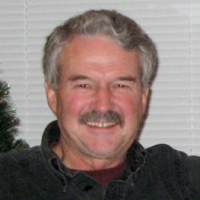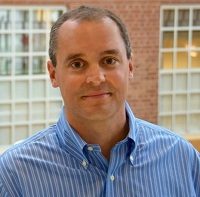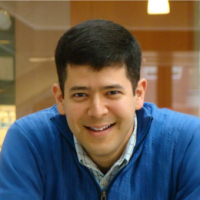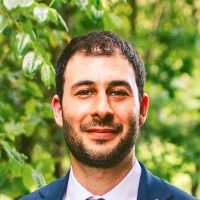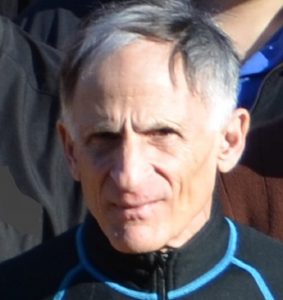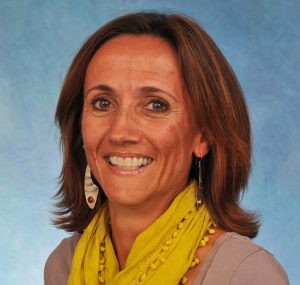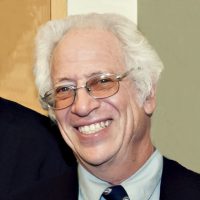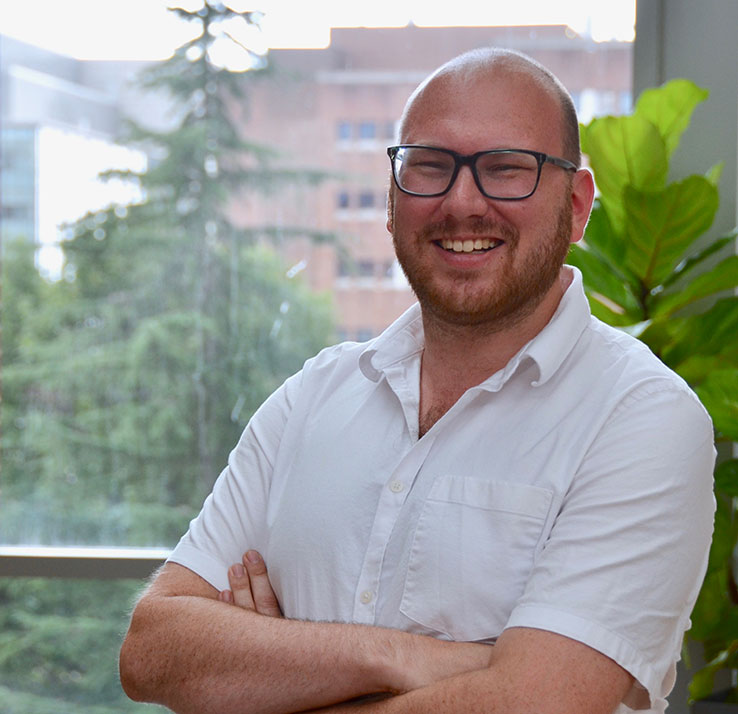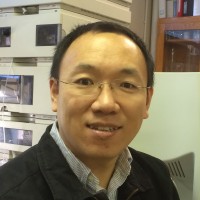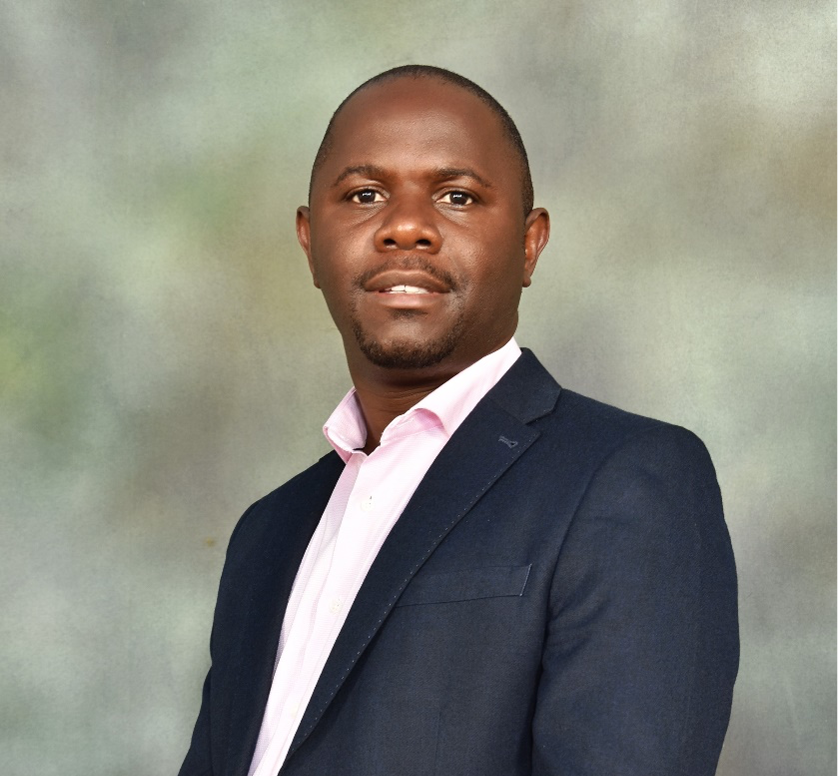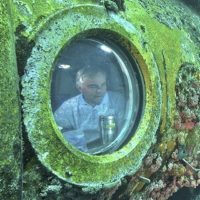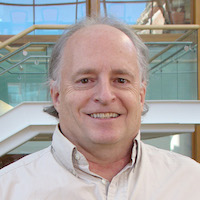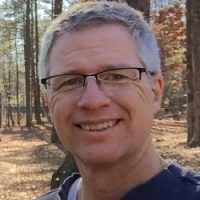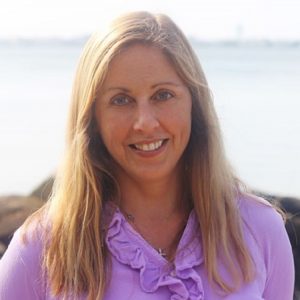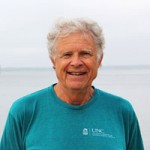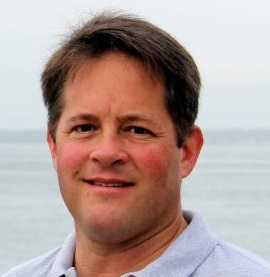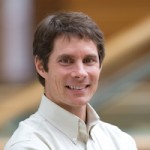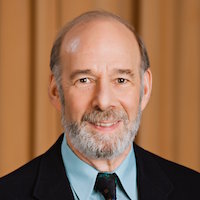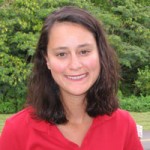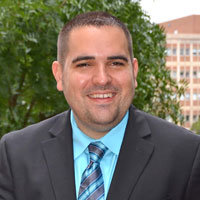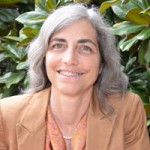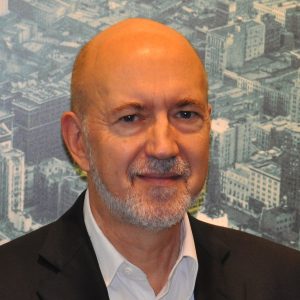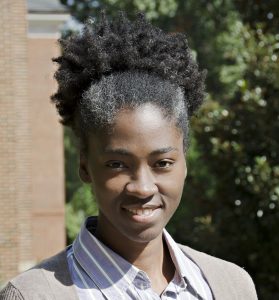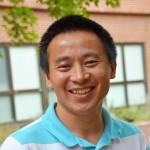Interdisciplinary Fields Of Study
 Climate Change Science, Impacts, & Solutions
Climate Change Science, Impacts, & Solutions
Climate change will drive future challenges. WHO recognizes climate change a major threat to global health and wellbeing. Climate change brings droughts, floods, heatwaves and extreme weather events, which in turn impact air pollution, water availability and quality, toxic releases, food and nutrition, infectious and non-communicable diseases, and will increase migration and conflict pressure and exacerbate health inequities. We work to understand the effects of climate change on health and wellbeing and to develop policy options for climate change mitigation and adaptation with co-benefits for health.
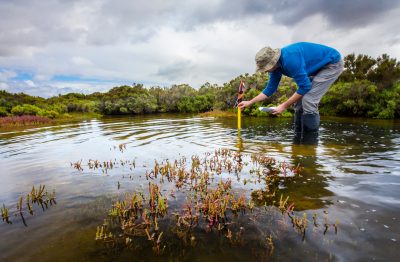 Air or Water Contaminants & Infectious Agents: Fate, transport, & Impacts
Air or Water Contaminants & Infectious Agents: Fate, transport, & Impacts
Threats to environmental and human health are continuously evolving. Thus, the study of emerging contaminants (e.g., PFAS) and infectious agents (e.g., COVID-19), play a major role in the health and safety of future populations. Major departmental research activities include: developing methods to measure and monitor chemical or microbial contaminants; ascertaining the linkages between sources and exposures; developing/using models to design effective exposure reduction strategies; and elucidating the genetic factors that lead to differences in disease outcomes among individuals or populations.
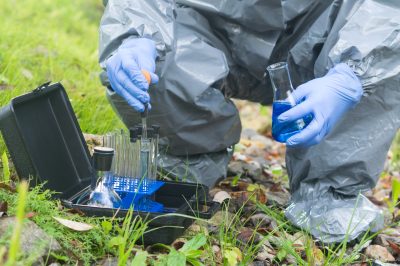
Toxic Exposures & Vulnerable Populations
Our faculty study the range of processes that ultimately lead to environmentally-related diseases, from characterizing and quantifying human exposure to understanding the cellular, molecular and biochemical underpinnings of these diseases. Environmentally-driven disease is influenced by various complex factors including exposure to environmental toxicants and pollutants in both air and water, individual differences in genetic and epigenetic susceptibility, and nutrition.
Healthy, Sustainable & Equitable Future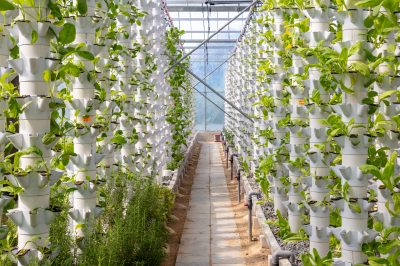
We design solutions for environment, climate, health and wellbeing using a variety of computational, experimental, field and community engaged approaches. We have unique expertise addressing financial risk in environmental systems, addressing problems at the food-water-energy, climate-air quality-health nexus, and engaging with vulnerable populations globally and locally. Our research, practice and policy guidance move us closer to a sustainable future. This work is uniquely possible at Gillings, were engineering, science and public health are found together and where health equity has always been a central part of our mission.
The table below shows how the three interdisciplinary fields of study intersect with individual faculty interests and focus areas of research.
Faculty and Their Areas of Research
Below is an alphabetical listing of the faculty in Environmental Sciences and Engineering together with brief descriptions of their research interests and links to more information.
John Bane
Professor Bane’s primary appointment is with the Department of Marine Sciences. His research focuses on the dynamics of the Gulf Stream and coastal air-sea interaction processes, including but not limited to ship, aircraft and satellite observational and numerical modeling methods and data assimiliation. His investigations include studying the process of deep-ocean cyclogenesis which strongly couples the surface meandering of the Gulf Stream to deep oceanic circulations, the wintertime air-sea interaction processes that occur along the Gulf Stream, and oceanic response to strong atmospheric disturbances. Dr. Bane heads the Carolina Ocean Observations Laboratory (COOL).
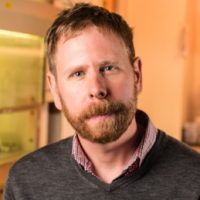
Joe Brown, PhD
Joe Brown
Dr. Brown has broad interests in water and sanitation technologies, environmental health microbiology, and the role of infrastructure in protecting public health and well-being. His current research includes the use of fecal waste streams in public health surveillance; the development and application of novel tools to track pathogens in environmental media; and observational and experimental studies to estimate the effects of water, sanitation, and hygiene interventions in controlling the transmission of infectious diseases. Dr. Brown has held former faculty appointments at the Georgia Institute of Technology and the London School of Hygiene and Tropical Medicine.
Gregory Characklis
Dr. Characklis serves as William R. Kenan, Jr. Distinguished Professor in the Department of Environmental Sciences and Engineering at the University of North Carolina at Chapel Hill, where he also holds an appointment in the UNC Institute for the Environment. Dr. Characklis is also Director of the Center on Financial Risk in Environmental Systems, an entity focused on translating environmental events (e.g., flood, drought) into financial outcomes. His primary research interests involve developing solutions to environmental financial risk (sometimes referred to as “climate risk”) challenges through systems-based modeling approaches that integrate consideration of both engineering and economic principles.
Orlando Coronell
Associate Professor Coronell studies basic and applied aspects of water and energy where membrane technology plays a central role. Dr. Coronell’s main focus areas are membrane processes for (i) water desalination and reuse, and (ii) energy generation and storage using salinity gradients . Currently, research focuses on advancing the understanding of the mechanisms of transport of water, salts, and other solutes through membranes, the development of new and improved membranes, and the optimization of membrane processes and systems. Such work involves wet chemistry, polymer synthesis, materials characterization at the nanoscale, use of state-of-the-art membrane systems, and mathematical modeling of membrane performance.
Michael Fisher
Assistant Professor Fisher develops, evaluates, and applies technologies and methods for addressing under-recognized health concerns in water and sanitation, both in the US and internationally. This work focuses on three areas: 1) monitoring and evaluation of water and sanitation processes, infrastructure, and service delivery; 2) improving water and wastewater treatment; and 3) applications of implementation science and quality improvement methods to improving the performance of water and sanitation systems. Topics of particular interest within these areas include improving the monitoring and control of antimicrobial resistant (AMR) organisms, as well as pathogens (such as some protozoan cysts and enteric viruses) that are resistant to conventional disinfection methods, in water and wastewater. Overall, this research contributes to a greater understanding of the determinants of effective and beneficial water and sanitation service delivery, and to innovations and evidence that can be used to improve these services.
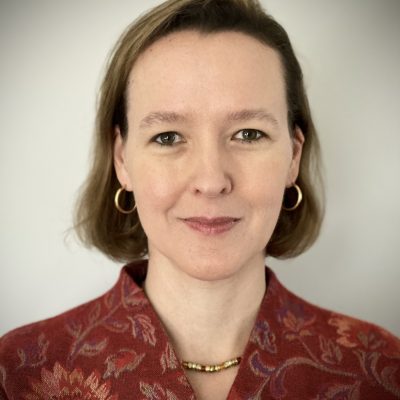
Rebecca Fry, PhD
Rebecca Fry
Angle Distinguished Professor Fry’s lab uses environmental toxicogenomics, toxico-epigenomics and systems biology approaches to understand the mechanisms of arsenic-induced carcinogenesis. A broad goal is to identify the genes and their encoded proteins that protect (or sensitize) humans to arsenic-induced disease. Our research employs state-of-the-art technologies including next generation sequencing to understand genome-wide consequences of arsenic exposure. The lab studies arsenic-exposed populations with varied disease outcomes to identify signaling pathways that are differentially modulated in response to exposure. A major goal of the research is to identify mechanisms of prevention of arsenic-induced disease.
Avram Gold
Professor Gold’s research involves oxidative damage to the DNA base guanine by 2-electron oxidation pathways. Such damage is initiated by exposure to xenobiotics that are epoxidizing agents either directly or as a result of metabolism and subsequent reaction cascade. Our laboratory also functions as part of the Chemistry Core component of Superfund and in this capacity synthesizes standards labeled with stable isotopes and performs structural characterizations for the program projects. This work is related to research into identification and quantitation biomarkers of exposure or toxicity resulting from environmental exposures.
Ilona Jaspers
Professor Jaspers (primary appointment in Pediatrics) uses various human lung cell in vitro models as well as animal and human in vivo models to study the adverse health effects of air pollutant exposures. Current efforts include examining mechanisms by which exposure to air pollutants modify lung cell biology and physiology and whether these changes modify the susceptibility to viral infections.
Rich Kamens
Retired Professor Kamens is the field site director for the UNC undergraduate research exchange program in Thailand, sponsored by the Institute for the Environment.
Noah Kittner
Dr. Kittner studies energy systems at multiple scales, from regional and international power grids to community-owned micro-grids and household energy dynamics. Kittner’s current work examines the relationship between energy systems, low-carbon development, and human health. Ongoing projects include energy system planning in Thailand, Laos, and Myanmar, the emissions and health effects of coal-fired power plants in Kosovo, and battery assessment for electric vehicle and energy storage applications. Kittner holds a PhD in Energy and Resources from UC Berkeley where he studied energy systems engineering, science, and policy. His work with the Renewable and Appropriate Energy Lab (RAEL) appears in leading journals ranging from Nature Energy to Environmental Science and Technology and Ecological Economics. Previously, he was a Fulbright Fellow at the Joint Graduate School of Energy and Environment in Bangkok, Thailand and has worked extensively on a Thai Solar PV Roadmap project with colleagues at Chulalongkorn University. He received his BS in Environmental Science (highest honors) with a dual minor in Mathematics and Urban Planning at the University of North Carolina at Chapel Hill.
Kun Lu
Associate Professor Lu’s research focuses on understanding the health effects of environmental exposure and individual response by integrating the microbiome, exposome, omics, and biomarker development. Dr. Lu’s lab is working on a number of important environmental chemicals ranging from heavy metals to pesticides, as well as others with significant public health concerns.
Rick Luettich
Professor Luettich’s primary appointment is in the Institute of Marine Sciences, where he currently serves as Director. His research deals broadly with modeling and measurement of circulation and transport in coastal waters. His modeling has emphasized the development and application of unstructured grid techniques that are optimized for geometrically complex systems such as sounds, estuaries, inlets and inundated regions and for high performance computing architectures. He has co-developed the ADCIRC circulation and storm surge model that is widely used by the academic, government and private sectors and has been applied extensively for modeling storm surge in the New Orleans areas as well as much of the US East and Gulf coasts. He is also active in interdisciplinary modeling studies such as physically mediated larval dispersal and water quality. His measurement activities have focused on process based studies in coastal waters, often to understand the role of physics in areas of water quality (e.g., phytoplankton blooms, dissolved oxygen depletion) and fisheries recruitment. His autonomous, vertical profiling, observational system has provided novel data on high frequency anoxic water upwelling, diel vertical plankton migration and wind driven mixing in shallow NC sounds.
Musa Manga
Dr. Manga uses environmental engineering and microbiology tools to identify low-cost, scalable, and sustainable interventions to interrupt transmission of excreta-related diseases to protect public health and wellbeing. His broad research interests are in planning, monitoring, and improvement of water, sanitation, and fecal sludge management practices to promote: i) equity for underserved communities in both developing and developed countries; ii) development and validation of pathogen hazards and risk models; iii) environmental justice and climate change mitigation; and iv) optimization of sanitation technologies/ wastewater treatment and BioResource Recovery (Nutrient and BioEnergy). Dr Manga’s current research includes development of tools for tracking pathogens and fecal hazards in communities; life cycle costing of water and sanitation programs; understanding the i) performance of sanitation technologies, ii) effectiveness of rural sanitation programs, iii) sustainability and equity in community-wide approaches that improve access to safe sanitation and water, and iv) alternatives to conventional water borne sewerage in dense urban areas; and development, optimization and application of sustainable human excreta and solid waste management technologies/ strategies to achieve effective pathogen inactivation and bioresource recovery.
Chris Martens
Aycock Distinguished Professor Martens’ research focuses primarily on biogeochemical processes driven by the decomposition of naturally-occurring organic matter in marine and estuarine sediments.
Cass T Miller
Okun Distinguished Professor Miller’s research involves the study of complex, multiphase or multimedia, environmental systems using theoretical, computational, and experimental means. Most of his work focuses on fluid flow and contaminant transport in subsurface systems. His research group is active in the development of subsurface remediation technologies for dense nonaqueous-phase liquids (DNAPLs) as well as numerical methods, stochastic analysis, and computational science.
Glenn Morrison
Professor Morrison has a primary interest in chemical and transport phenomena in building environments. These phenomena help us understand, but also control, human exposure to chemicals and particles that are released or transformed indoors. Dr. Morrison has directed research projects and field studies of dermal uptake of indoor pollutants, ozone surface chemistry, building forensics, sensor development, pollutant movement in buildings, aerosol transport of SVOCs, exposure implications of smog reactions with human surfaces and hair and related projects.
Rachel Noble
Professor Noble’s (primary appointment in the Institute of Marine Sciences) research program bridges environmental microbiology and public health. A main thread of Dr. Noble’s work is the application of novel molecular techniques for applied and basic science to protect public health, aquaculture, and aquatic environments. She has developed a range of rapid water quality test methods, including those for E. coli, Enterococcus, and Vibrio species and studies the dynamics of microbial contaminants contributed through stormwater runoff to high priority recreational and shellfish harvesting waters. A specific recent interest is conducting research on wastewater-based surveillance for SARS-CoV-2. She leads the laboratory research program that is responsible for the NC Wastewater Monitoring Network, and has been a strong proponent of standardized, fully quantitative molecular methods, improvement of sample processing and recovery for difficult to measure human pathogens, and development of improved highplex molecular approaches for quantification of 10-20 pathogen targets from a single assay..
Amanda Northcross, PhD
Amanda Northcross, PhD
Amanda L Northcross has more than ten years of experience assessing environmental exposures to understand their impacts on the health of communities. Dr. Northcross focuses her expertise on research that helps identify and reduce environmental inequities. Combing community-engaged research approaches with her background in atmospheric chemistry and exposure assessment she works to develop accessible tools, approaches and methods to assess exposures to air and waterborne contaminants.
Leena Nylander-French
Professor Nylander-French’s research and teaching focuses on (1) understanding the relationship between dermal and inhalation exposure, (2) the effect of individual genetic differences on the function of enzymes that detoxify hazardous agents and that affect the development of disease, and (3) new scientific approaches to quantitatively measure exposure to toxicants and sophisticated exposure-modeling tools in an effort to standardize and improve exposure and risk assessment. The long-term objective of her laboratory and field investigations is to identify factors, which contribute significantly to the risks of disease in populations, so that intervention and prevention controls can be implemented to reduce unacceptable levels of risk.
Hans W. Paerl
Kenan Distinguished Professor Paerl (primary appointment in the Institute of Marine Sciences) conducts research in microbially-mediated nutrient cycling and primary production dynamics of aquatic ecosystems, environmental controls and management of harmful algal blooms, and assessing the causes and consequences of man-made and climatic (storms, floods) nutrient enrichment and hydrologic alterations of inland, estuarine and coastal waters. His studies have identified the importance and ecological impacts of atmospheric nitrogen deposition as a new nitrogen source supporting estuarine and coastal eutrophication. He is involved in the development and application of microbial and biogeochemical indicators of aquatic ecosystem condition and change in response to human and climatic perturbations. He heads up the Neuse River Estuary Modeling and Monitoring Program, ModMon and ferry-based water quality monitoring program, FerryMon, which employs environmental sensors and various microbial indicators to assess near real-time ecological condition of the Pamlico Sound System, the USAs second largest estuarine complex.
Michael Piehler
Professor Piehler studies microorganisms and microbially mediated processes in coastal land-water interfaces (particularly wetlands) and near-shore waters. His research spans a broad range of microbial systems including microphytobenthic communities, epiphytic microalgae, benthic bacterial communities, bacterioplankton, and phytoplankton. The land-water interface is an area of intensive biogeochemical cycling and trophic interactions involving microorganisms. It is also an area of extensive human activity, making the interactions of pollutants and native microbial communities in the land-water interface a significant issue in developed coastal environments.
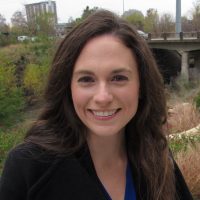
Julia Rager, PhD
Julia Rager
Assistant Professor Rager’s research focuses on understanding the toxicological effects of chemicals in the environment through the use of in vitro, in vivo, and computational-based approaches. Toxicological findings are placed into the context of human exposure using dosimetry modelling and high-throughput environmental monitoring. By combining toxicity with exposure assessment strategies, Dr. Rager’s research is placed into the context of chemical risk prioritization and risk assessment, with the ultimate goal of improving chemical safety assessments to better protect public health.
Marc Serre
Associate Professor Serre is interested in the development of space/time statistical methods to model the distribution of environmental and health processes, and their application in exposure mapping, disease mapping, environmental epidemiology and risk assessment. His interests in the application of these methods to study problems of air pollution and their health effects include the use of active and passive samplers to monitor air pollution at the community level, the development of land use regression models for air quality, the integration of monitoring data with air quality model predictions, and the use of spatial regression techniques to measure the strength of associations between air pollutants and health endpoints such as cardiovascular mortality, asthma, malodor, and quality of life.
Mark D. Sobsey
Recently retired from his full-time position as Kenan Distinguished Professor, Sobsey studies human exposure to and health effects from pathogens (disease-causing) microbes in water, food and other environmental media to which people can become exposed in the developed and developing word. An important focus of this research is to combine microbial detection of pathogens (and microbial indicators for them) in these media with human health effects studies (such as diarrheal disease prevalence and incidence) in populations exposed to these media in order to quantify disease risks and burdens, devise and evaluate interventions to reduce these risks, such as water treatment processes that reduce pathogen, and use this information to conduct risk assessments and inform policy decisions for risk management. Hence this research shifts the axis of the University to work that informs integrated environmental decision-making and influences State, national and global policy on water, sanitation and health.
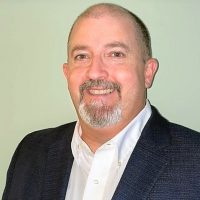
John A. Staley, PhD
John A. Staley
Dr. Staley’s research and teaching program focuses on occupational safety and health hazards, particularly among vulnerable workers. His work also includes disaster preparedness and response program development, infectious disease and environmental health/safety, and program/curriculum design for undergraduate and graduate programs. He has a strong background in outreach with front-line workers, particularly the first responder community, e.g., fire/EMS, law enforcement, the military, and underrepresented populations. He works with regional partners across the southeastern United States to foster regional cross-collaboration to improve the health of the US workforce, particularly with a Total Worker Health® approach. This includes the critical intersection of community engagement and workforce development with the public, health care, business, and practice sector stakeholders in occupational safety and health research, practice, and policy.
Jill Stewart
Philip C. Singer Distinguished Professor Stewart is developing novel techniques to detect and track pathogens in water. She is also interested in evaluating impacts of non-point source pollution, and in evaluating the manner in which human activities (development, stormwater management) can affect their exposure to microbial contaminants. Overall, this research is leading to a greater understanding of how environmental conditions can affect human health, and how humans themselves influence this process.
Jason Surratt
Professor Surratt uses advanced mass spectrometry and chromatographic techniques to understand as deeply as possible the atmospheric chemistry that occurs in the gas and particulate phases, with special focus on the chemistry leading to formation of secondary organic aerosol (SOA) and to the ageing of organic aerosols. Over the last five years, he has helped to elucidate the chemical pathways leading to organic aerosol formation from the atmospheric oxidation of isoprene, which is the most abundant non-methane hydrocarbon emitted annually into the Earth’s atmosphere that was previously thought not to contribute to SOA formation, in the presence or absence of nitrogen oxides (NOx) and acidified sulfate aerosols. Professor Surratt will continue to chemically characterize both laboratory generated SOA and ambient organic aerosol collected from locations around the world in order to uncover sources of SOA formation in the troposphere. Since numerical models currently underestimate the amount of SOA mass observed in fine aerosol collected from urban locations, improvements in our fundamental understanding of the detailed reaction mechanisms leading to SOA formation are still needed. Professor Surratt’s research will require the combination of gas- and particle-phase mass spectrometric measurements to be made in order to more fully elucidate chemical formation mechanisms of SOA; these chemical measurements will be coupled with toxicological measurements in order to identify potential sources of human health effects.
Barbara Turpin
Professor Turpin’s research is designed to reveal fundamental processes needed to accurately predict human exposures and effects of airborne particles from precursor emissions. She is best known for her work on the formation of organic particulate matter through aqueous chemistry (e.g., in clouds), organic sampling artifacts, and modification of the ambient air pollution mix with outdoor-to-indoor transport. She works to facilitate communication between atmospheric, exposure and health scientists with the ultimate goal of effective public health protection.
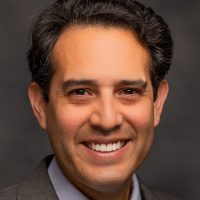
Dr. Will Vizuete
William Vizuete
Associate Professor Vizuete uses high performance computers and three-dimensional simulations to model the atmosphere with a focus on understanding the chemistry of pollution formation. These computer models provide insight into the complex interaction of chemistry and physical processes that ultimately produce air pollution. A significant part of Dr. Vizuete’s work focuses on providing technical expertise to state and federal policymakers who are developing pollution reduction strategies. Through this work, he is able to provide objective scientific analysis for policies that will affect the health of millions of people. Dr. Vizuete is also interested in the chemistry of aerosols and Linking atmospheric chemistry to health effects.
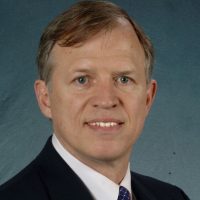
Paul Watkins, MD
Paul Watkins
Howard Q. Ferguson Distinguished Professor Watkins’ expertise and experience spans the research spectrum in DILI (drug induced livery injury) from basic investigation in drug metabolism and transport, to clinical research, to causation assessment, and to regulatory affairs. His primary appointment is in the Eshelman School of Pharmacy where he is Director of the Center for Drug Safety Sciences.
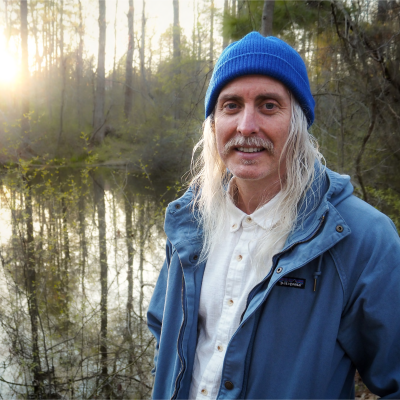
Timothy Weigand, PhD
Timothy Weigand
Dr. Weigand’s research focuses on the development of computational approaches for environmental problems. More specifically, his work involves examining and connecting the multiple spatial and temporal scales inherent to environmental systems. In his work, computational fluid dynamics, data science methods and physics-informed machine learning are used to help understand the environment. Applications include flow and transport in porous media systems, examination of reverse osmosis membranes, assessment of microfluidic devices for medical diagnostics, and prediction of urban wind fields.
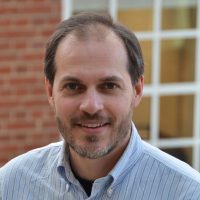
Dr. Jason West
Jason West
Professor West is interested broadly in the problems of air pollution and climate change, and researches the science and policy Links between these problems. He uses global models of air pollutant transport and quantitative methods of policy analysis to consider interrelated problems: the effects of air pollutants on climate change, the inter-continental transport of ozone and particulate matter, the effects of air pollution on human health, and the effects of energy technologies on future air pollution and climate change. His research aims at building the tools to analyze mitigation of air pollution and climate change in an integrated manner, considering both industrialized and developing nations.
Dale Whittington
Professor Whittington is an environmental and water resources economist with research interests in nonmarket valuation methods. His research focuses on the political economy of international rivers such as the Nile and the Ganges. He also works on water supply and sanitation policy issues in less developed countries.
Courtney Woods
Assistant Professor Woods is an alumna of the Environmental Sciences and Engineering Department at the UNC Gillings School of Global Public Health. She has broad interests in the field of environmental health, including ethics, global health, minority health, cancer, and diabetes.
Zhenfa Zhang
Associate Professor Zhang integrates synthetic chemistry and analytical techniques into many areas of research in environmental sciences in order to understand the chemical reaction behind the transformation of organic pollutants and their health effect.
Labs and Centers
The Department of Environmental Sciences and Engineering houses a number of research laboratories which are located in the Michael Hooker Research Center, Rosenau Hall, McGavran-Greenberg Hall and the Baity Building, as well as off-campus research facilities. In addition to experimental and field laboratory settings, the department houses labs for modeling and computational analysis of environmental systems, such as atmospheric circulation and air quality models; ground and surface water flow and transport models; fluid flow and contaminant transport models for indoor air environments; exposure analysis and health effects; risk assessment; and environmental epidemiology.
The labs and centers contain state-of-the-art equipment and offer opportunities for students to supplement classroom learning with valuable research experience.
Most faculty run their own laboratories, and you can explore their labs by visiting their individual profiles on the website.
List of Institutes, Centers, Affiliates, and Friends
The Water Institute at UNC (within the Department of Environmental Sciences and Engineering)
Superfund Research Program
Engineers Without Borders
ENVR Student Organization (ENVRSO)
Chancellor’s Science Scholars
BeAM Design Center @ Rosenau
Biomarkers Mass Spectrometry Sub-Core
Bayesian Maximum Entropy (BME) Lab
UNC Institute for the Environment
UNC Environmental Resource Program (ERP)
UNC Department of Marine Sciences
UNC Institute of Marine Sciences
UNC Curriculum in Toxicology
Center for Environmental Health and Susceptibility (CEHS)
Occupational and Environmental Exposure Science (OEES) Program
North Carolina Occupational Safety and Health Education Research Center (NC OSHERC)
UNC Lineberger Comprehensive Cancer Center
Center for Environmental Medicine, Asthma and Lung Biology
Center for Galapagos Studies
Center on Financial Risk in Environmental Systems (CoFiRES)
Institute for Environmental Health Solutions (IEHS)

